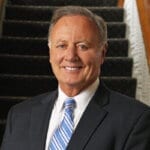Healthcare Providers Receive ‘Helicopter Money’ with Strings Attached
April 27, 2020 | Robert H. Iseman | |In 1969, noted economist Milton Friedman coined the term “helicopter money” to describe the monetary policy of injecting liquidity into the market, much like dropping money to people from helicopters, as an alternative to quantitative easing. The CARES Act, popularly referred to as the Provider Relief Fund is a “helicopter” that dropped a lot of money on many healthcare providers.
But this “free money” comes with strings attached. Someday in the future, someone will knock on the door and ask for documentation of compliance with the terms and conditions attached to the funding. The time to prepare for that is now.
On April 10, providers began to receive their share of a $30 billion fund without even asking for it. (The fund’s second phase will distribute another $70 billion in a more targeted manner, e.g. rural hospitals, those treating the uninsured, etc.) The money was sent to providers that submitted fee for service (FFS) reimbursement requests to Medicare during 2019, cared for possible coronavirus patients after January 31, 2020, agreed not to collect any out-of-pocket payments greater than those that would apply if the care were delivered by an in-network provider, accepted certain terms and conditions limiting the manner in which the money can be spent and accepted record-keeping requirements. The payments are a grant, not a loan.
The amount of the payment is based on the ratio of the provider’s Medicare FFS payments in 2019 to the total Medicare FFS payments in 2019, which was $484 billion. The amount of the payment is a product of that ratio multiplied by $30 billion.
Using an HHS portal, providers are required, within 30 days of the receipt of the money, to attest to their eligibility for the payment and accept certain terms and conditions. They are very important and require providers to plan now to avoid serious problems later.
Here is where the “strings” come in.
The funds are disbursed based on the TIN of the billing entity. A separate attestation is required for each TIN. This may cause confusion in some large provider organizations which bill under multiple TINs. Some providers have said that they can’t locate the money. The answer to this problem is to follow the TINs and the accounts related to them.
The process of distributing the money by TIN may cause other problems for organizations billing under multiple TINs. The question is whether the entity receiving the money is entitled to keep it under the terms of the contractual relationships with entities in the network. This will vary from contract to contract and from provider organization to provider organization. In some instances the TIN entity may be required to remit the money to others in the network; in other instances the contractual relationships may be ambiguous and cause the billing entity to try to keep the money for itself.
The receipt of the money comes with not only “strings” but risks. Providers are advised to carefully document their entitlement to the money; that the amount received is correct (check the math); and, most importantly, that the money is used “to prevent, prepare for, and respond to the coronavirus, and shall reimburse the Recipient only for health care related expenses or lost revenues that are attributable to the coronavirus.” The money can be used for executive compensation but not to exceed the pay for Executive Level II, which is $197,300 after January 5, 2020.
Bear in mind that the terms and conditions require the submission of reports by the Recipients concerning the use of the money. The Recipients are legally accountable for this. Some Recipients are required to file quarterly reports (those receiving more than $150,000 from all coronavirus relief programs), while others receiving lesser amounts are required to submit reports upon request.
The key to compliance is careful planning, record keeping and documentation; and the maintenance and disbursement of the money received in a separate account to facilitate documentation and avoid being on the wrong end of serious enforcement actions by the government.
Contact your healthcare attorney for guidance on compliance so you can keep the money you received and avoid being on the wrong end of serious enforcement action by the government.



